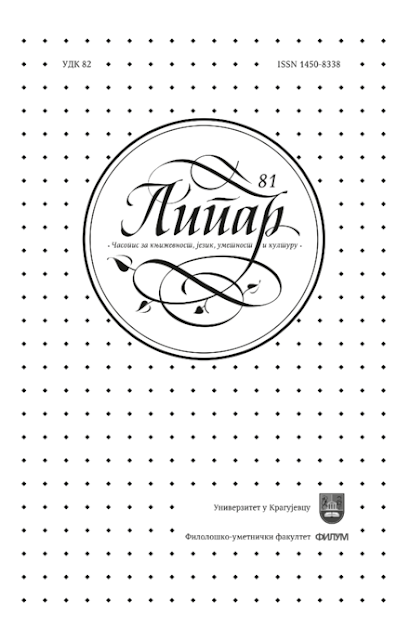THE PRODUCTION OF HIGH BACK VOWELS: A CONTRASTIVE STUDY OF AMERICAN ENGLISH AND STANDARD SERBIAN
THE PRODUCTION OF HIGH BACK VOWELS: A CONTRASTIVE STUDY OF AMERICAN ENGLISH AND STANDARD SERBIAN
Author(s): Marija JanevskaSubject(s): Language and Literature Studies, Theoretical Linguistics, Phonetics / Phonology, Comparative Linguistics
Published by: Универзитет у Крагујевцу
Keywords: vowel quality;vowel quantity;monophthong;high back vowels;General American;Standard Serbian
Summary/Abstract: This paper reports on the findings of a contrastive study of American English high back vowels/u, ʊ/ and Serbian vowel /u/ produced by ten male native speakers of Serbian. Previous research (Marković 2009a; Bjekić, Čubrović 2021; Čubrović 2019, 2017; Dančetović, Nešić 2017) has indicated that the differences in quality between the English high back vowels /u/ and /ʊ/ are often poorly detected by Serbian speakers. Therefore, the overall aim of the present research is to observe the acoustic properties of high back vowels in the given languages, so as to determine whether or not our subjects can adequately produce the L2 vowels with respect to both quality and quantity, and whether they can differentiate them from their L1 categories. The research subjects were first instructed to read a set of 13 monosyllabic English words representing the high back vowels /u, ʊ/ in different phonetic environments. The second task called for the subjects to read a set of 13 Serbian words representing the vowel /u/ in short and long stressed syllables. The collected speech samples were then analyzed acoustically using Praat, version6.2.13 (Boersma, Weenink 2022). The statistical analysis of the acoustic measurements was performed using R, version 4.2.1 (R Development Core Team 2022). The results suggest that, in terms of quantity, in the speech of Serbian students, the lax vowel, in particular, bears more resemblance to the subjects’ L1 category, rather than the targeted vowel. The analysis of the formant data indicates that, although our subjects’ L2 categories differ from those of native speakers, the quality of GA high back vowels our subjects produce does not reflect the quality of their L1 categories.
Journal: Липар - часопис за књижевност, језик, уметност и културу
- Issue Year: XXIV/2023
- Issue No: 81
- Page Range: 155-174
- Page Count: 20
- Language: English

